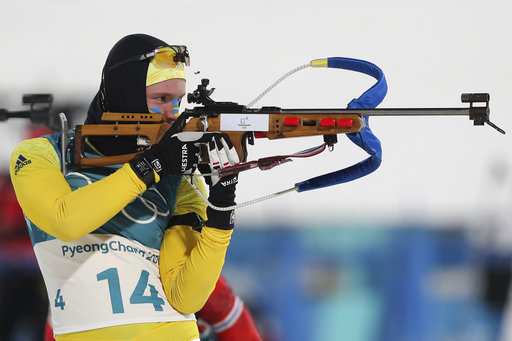Skiing, shooting, and sliding stones in the Winter Olympics

(AP Photo/Mathias Mandl)
February 13, 2018
There are a lot of events during the Winter Olympics, but some of them are not as prominent as others. Enter the biathlon and curling, two sports whose event and athletes never get enough recognition.
The biathlon is a mixture of cross-country skiing and rifle shooting, all of which takes place over 10 km for men, and 7½ km for women. The tasks of shooting and skiing both take skill, but the most difficult part of the event is transitioning from the fast pace of skiing to the steady control needed to get a precise shot.
While skiing, each contestant’s heart rate will rise dramatically as they vigorously ski from point to point. At each stop though, their posture must become almost static, allowing them to make an accurate shot. Contestants receive penalties for missing the target, receiving either a time deduction or an addition of 150 m to their next leg of skiing.
This year’s contest is already done, with Germany taking home the gold medal in both the men and women’s events. There are plenty of highlights online if you want to see what the event is all about, or you could watch curling which will be going on until Feb. 24.
Consisting of 10 ends (rounds), with each team getting 8 rocks per end, curling usually takes a few days to complete.
The goal of curling is to get the rock across the ice to the button (center). Points are awarded to the team that has one or more rocks closest to the button. Anything is legal in this sport, you can bump other team’s rocks out of the way, and even place roadblocks with your own rocks.
Each slide takes a tremendous amount of skill since force, trajectory, and future placement must all be in mind. Once the rock leaves the throwers hand, it can not be touched again, but it can be redirected by sweepers. By sweeping the ice, the top layer of “pebbled” water melts, reducing the friction on the rock and letting it slide further.
“Pebbles” is the term given to tiny water droplets that have been sprinkled on the ice after each round. Those “pebbles” help reduce friction on the rocks so that they can make it to the button at the other end. If the ice on a curling rink was like normal ice, the friction would be too great and neither team would be able to win.
With lots of time spent practicing and tremendous amounts of skill, be sure not to miss these athletes compete in their events this year, and in years to come.







